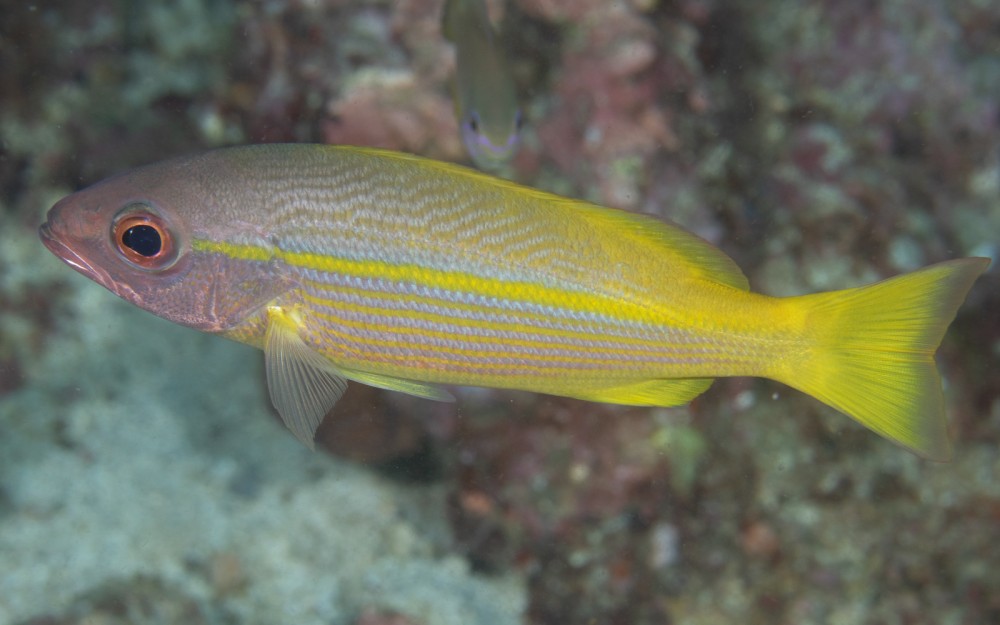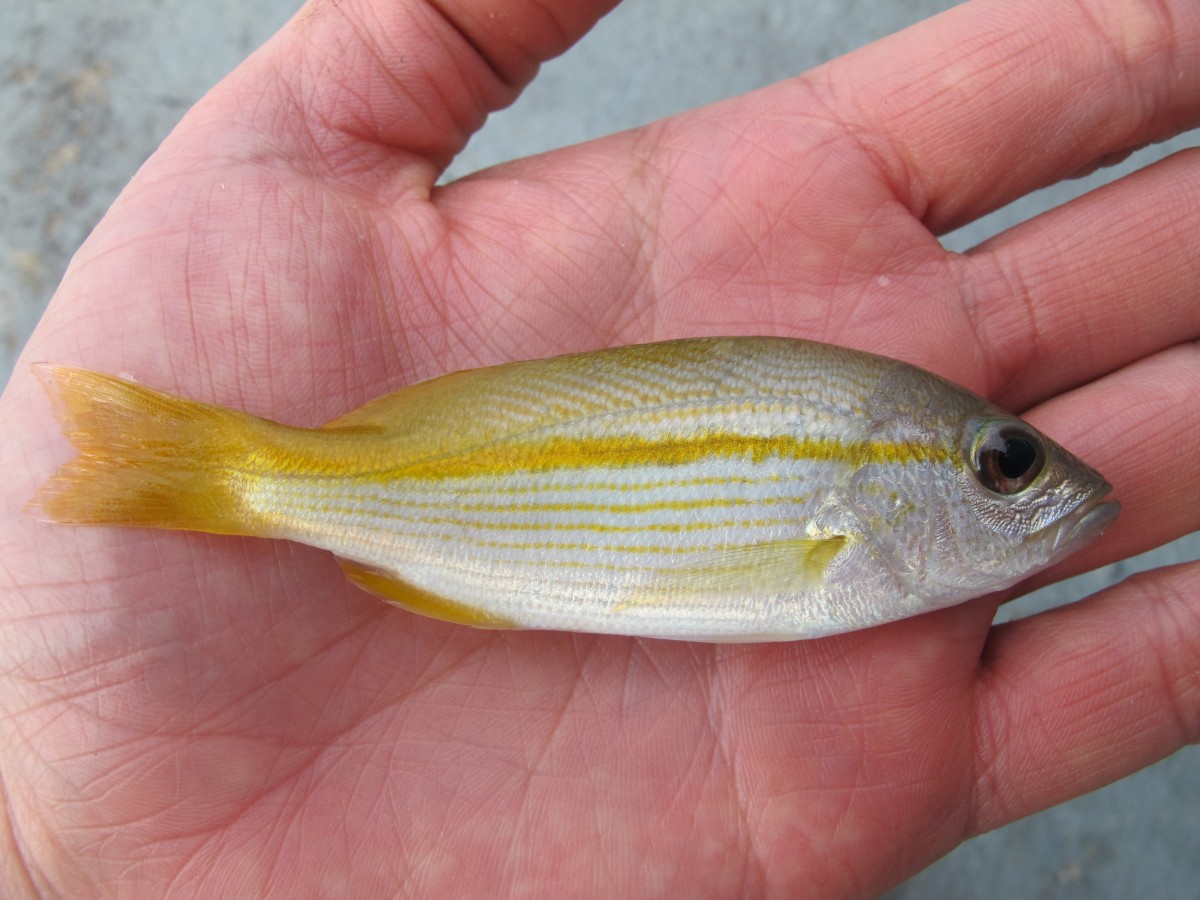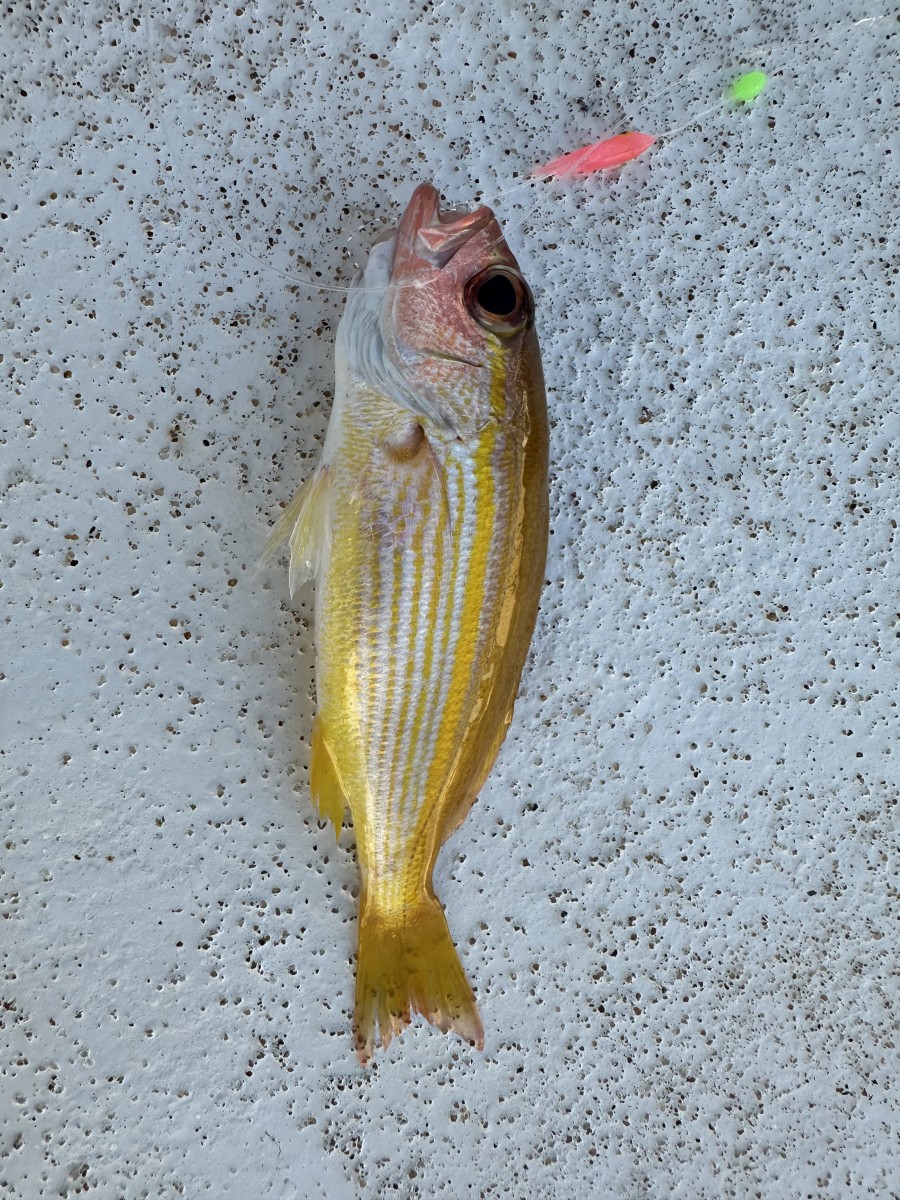Bigeye snapper
(Lutjanus lutjanus)

Image source: Mark Rosenstein | inaturalist.org
Classification
General data
The bigeye snapper has a fusiform, slender body which has a standard length that is 2.9 to 3.3 as long as the body\\\'s deepest points. It has a gently sloped forehead and the preopercular incision and knob are weakly developed. The vomerine teeth are arranged in a triangular patch with a central rearwards extension and the tongue has a patch of grain-like teeth.
The dorsal fin has 10-12 spines and 12 soft rays while the anal fin contains 3 spines and 8 soft rays. The rear of the dorsal fin and the anal fin have an angular profile, the pectoral fins have 16-17 rays and the caudal fin is truncate or weakly emarginate.
This fish attains a maximum total length of 35 cm (14 in).
The upper back is golden-brown in colour with silvery-white flanks with a brown to yellow stripe running from the snout to the dorsal caudal peduncle. It has oblique golden lines above the lateral line and horizontal stripes below it. The dorsal, anal and caudal fins are vivid yellow.
The bigeye snapper has a wide Indo-West Pacific distribution. It is found from the Red Sea and the eastern African coast as far south as South Africa and Madagascar east along the southern Asian coast, including the Seychelles, into the Pacific where it has been recorded from Tonga and Wallis Island. It extends north to Japan and south to Australia.
In Australian waters it has been recorded from the coasts north-western Western Australia around the tropical northern coast to the northern coast of Queensland.
It is found at depths between 1 and 96 m (3 ft 3 in and 315 ft 0 in) in areas of coral reef and inshore waters with soft substrates.













